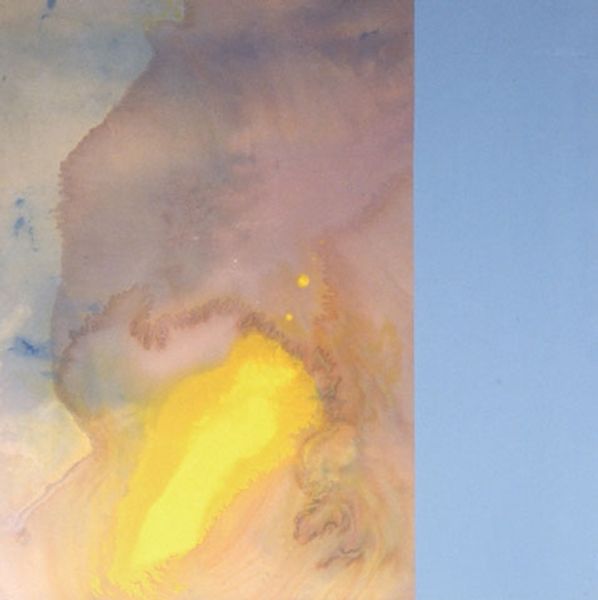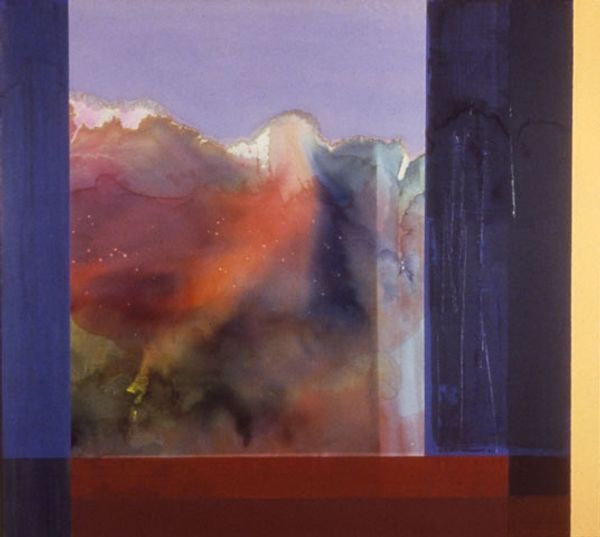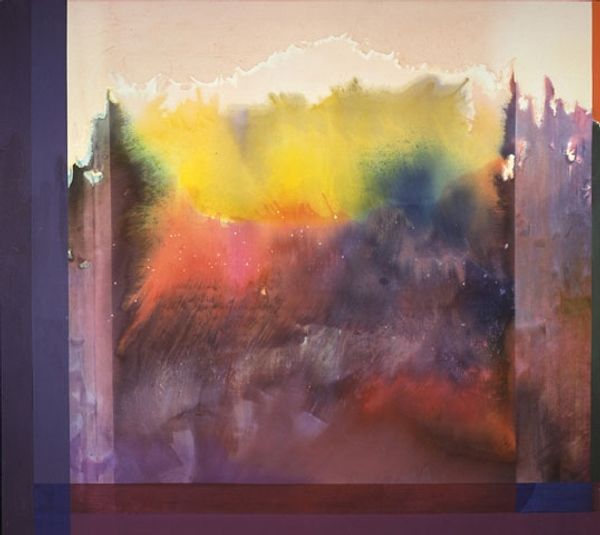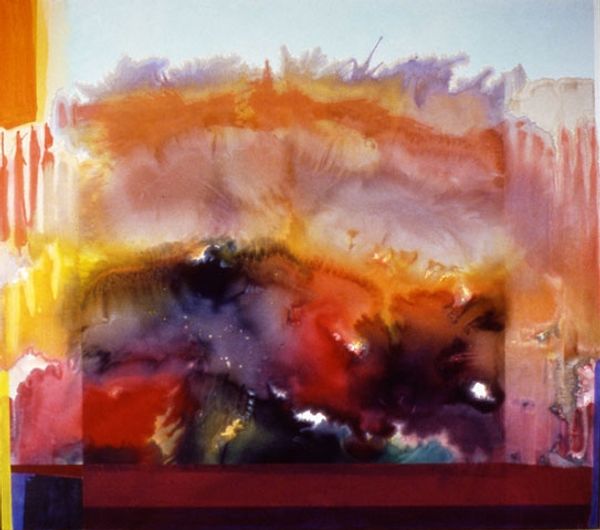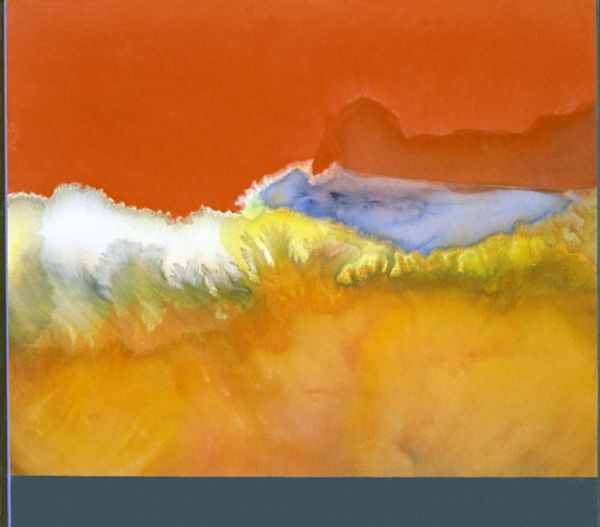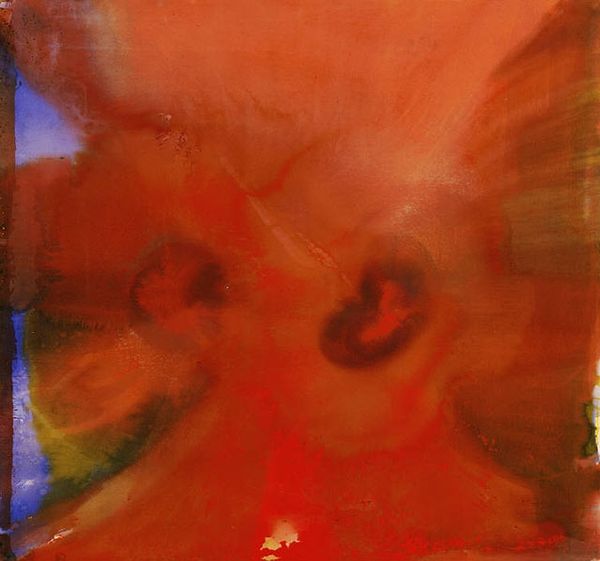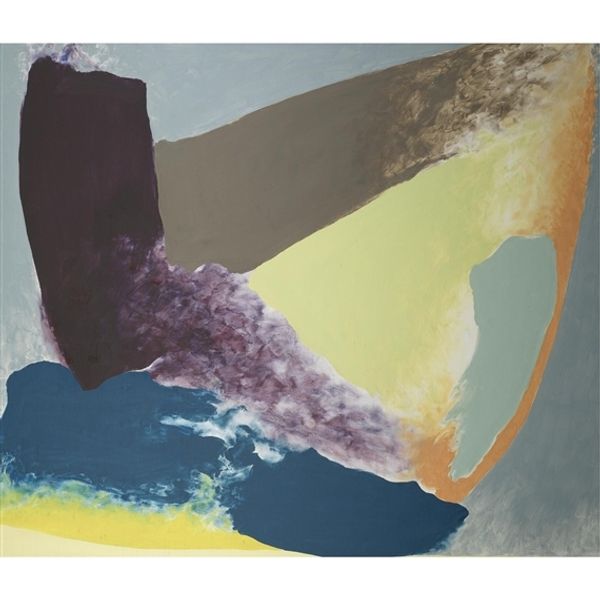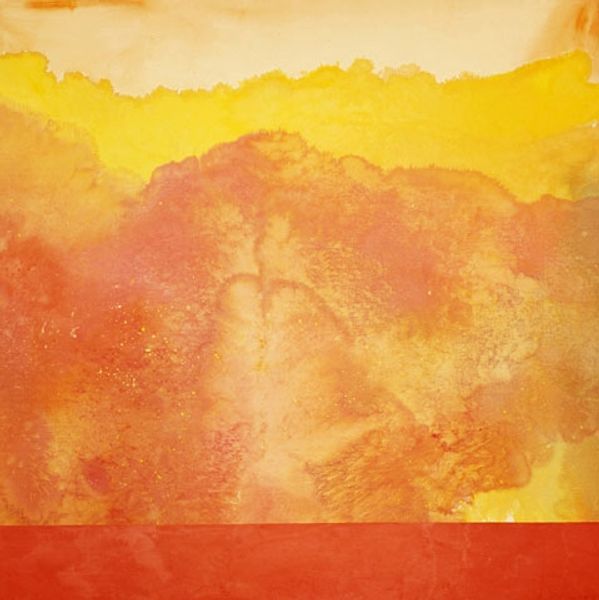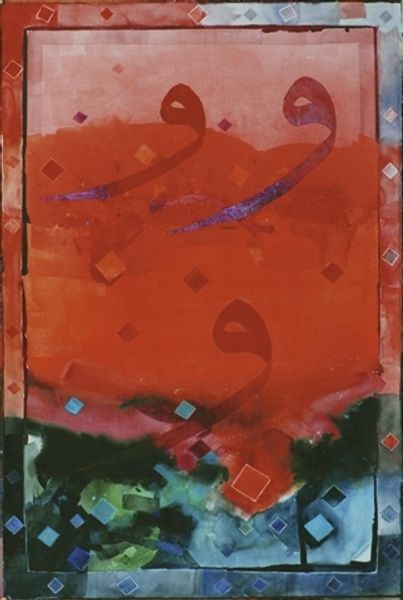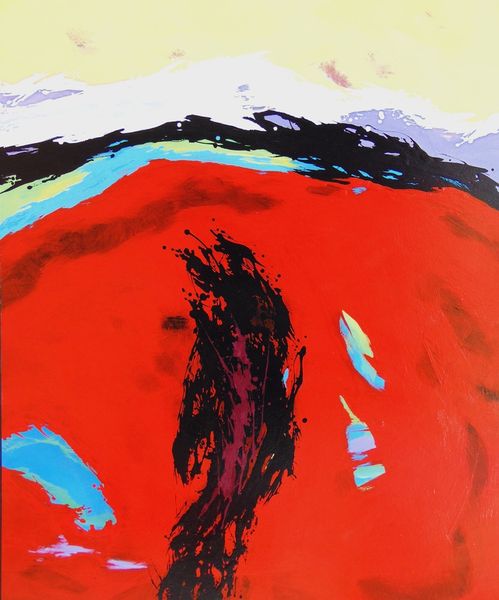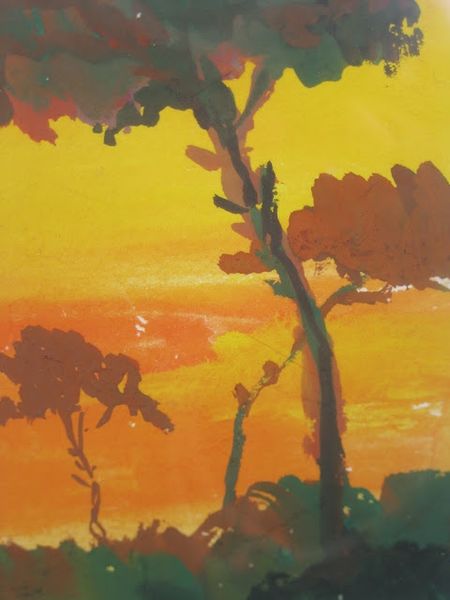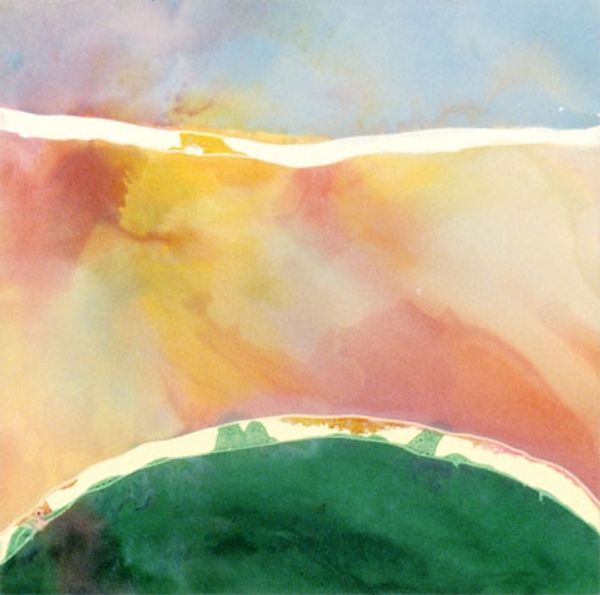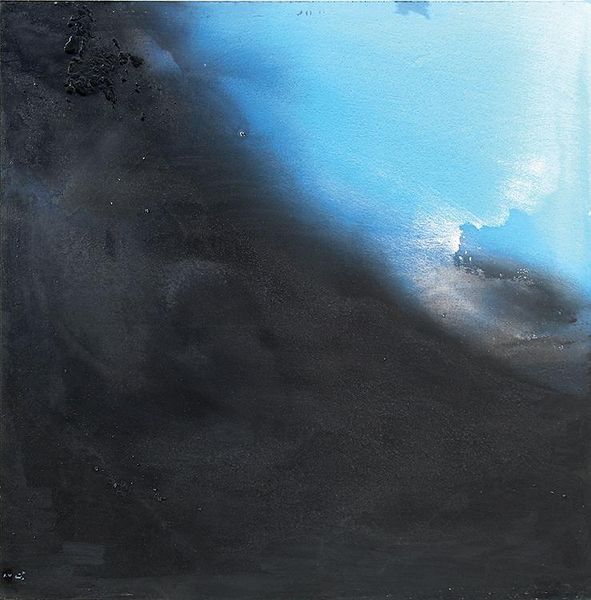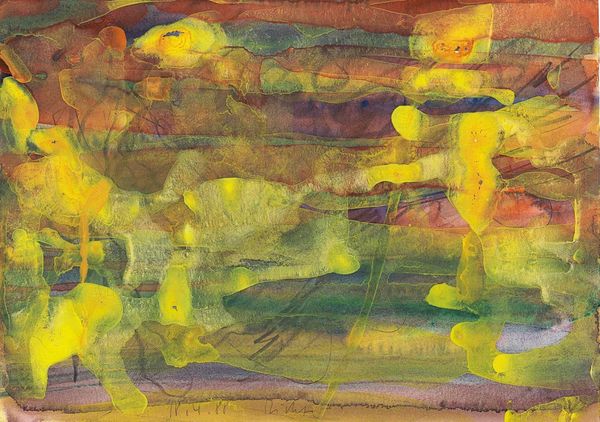
Copyright: Ronnie Landfield,Fair Use
Curator: Looking at Ronnie Landfield’s "Ocean Unconscious", painted in 1985 using acrylic on canvas, what's your immediate impression? Editor: The blending of hues and atmospheric washes create a dreamy effect; the composition is dominated by what appears to be large nebulous shapes of different colors and tonal weights with a lighter chromatic atmosphere up top and more grounding deeper saturated colors toward the bottom. I think the title fits remarkably well, what’s your perspective? Curator: Landfield, often associated with Color Field painting, came of age in a time of great political upheaval and social change. Artists looked to abstraction as a means to escape traditional artistic restraints and express interior landscapes. Here, I see a reflection of those anxieties in the ‘80s filtered through an exploration of unbounded inner worlds, almost utopian given those intense turmoils. Editor: Interesting point about social anxiety reflected in abstraction! Focusing on its formal elements, there are some darker impasto gestures, though there is not clear gestural focus point within the composition; a fascinating contrast with other gestural abstract painters of this time like Richter. Would you say his influences were less socio-politically motivated than, perhaps, De Kooning? Curator: Precisely! It reflects how some artists engaged with the past in more subtle ways, indirectly echoing emotional turbulence while moving towards different means of transcendence; Landfield himself noted he wanted to offer an opportunity for his viewer to have a beautiful aesthetic experience and find the extraordinary. Editor: I find myself especially drawn to how the horizon of these denser dark pigments bleed out under a bright thin chromatic veil above, and how this division helps structure our gaze while emphasizing, even embracing, the canvas surface. Curator: Indeed, and in its original gallery context, that would’ve also been key. Museums in the '80s faced pressure to champion abstract art which became seen as either too difficult or too esoteric for a mainstream audience; displaying works like this challenged and shifted existing narratives in our public discourse about what mattered aesthetically in an era when painting was largely pronounced dead, at least from certain theoretical camps. Editor: This gives a wonderful additional layer to this work. After having closely studied this, and with the historical context you provided, I am reminded how color, space, and surface each add to the visual richness within Landfield's creation, offering entry points to decode abstract images as meaningful visual spaces that continue to challenge viewers. Curator: Absolutely. “Ocean Unconscious” showcases art's fascinating ability to engage both personally and socio-politically with the public domain by challenging historical perceptions.
Comments
No comments
Be the first to comment and join the conversation on the ultimate creative platform.
